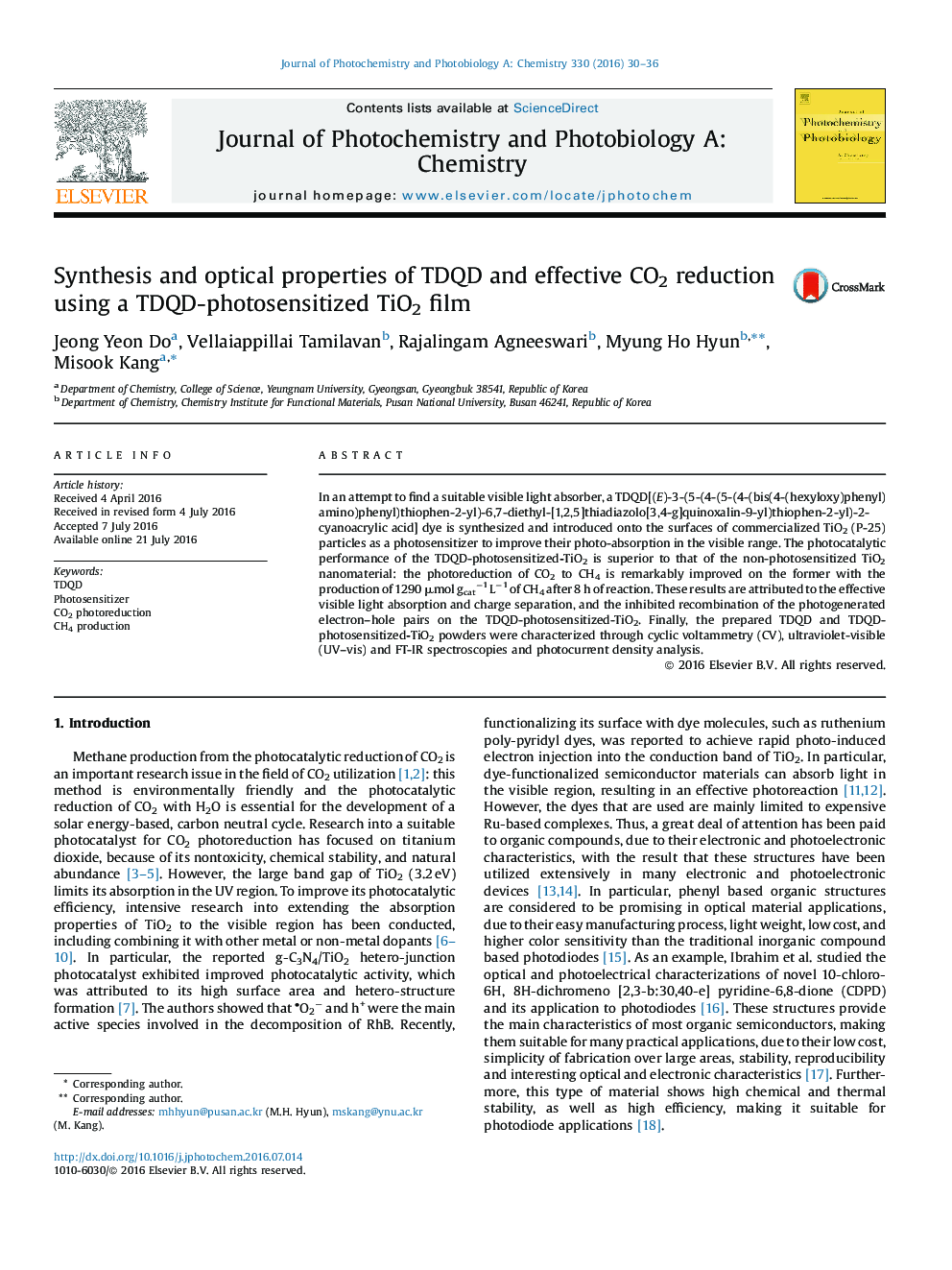| Article ID | Journal | Published Year | Pages | File Type |
|---|---|---|---|---|
| 26012 | Journal of Photochemistry and Photobiology A: Chemistry | 2016 | 7 Pages |
•An organic dye, TDQD is synthesized.•The photocurrent density increased in the TDQD-photosensitized-TiO2 film.•The photocatalytic performance of the TDQD-photosensitized-TiO2 is superior to that of TiO2.•The photoreduction of CO2 to CH4 is remarkably improved over TDQD-photosensitized-TiO2.
In an attempt to find a suitable visible light absorber, a TDQD[(E)-3-(5-(4-(5-(4-(bis(4-(hexyloxy)phenyl)amino)phenyl)thiophen-2-yl)-6,7-diethyl-[1,2,5]thiadiazolo[3,4-g]quinoxalin-9-yl)thiophen-2-yl)-2-cyanoacrylic acid] dye is synthesized and introduced onto the surfaces of commercialized TiO2 (P-25) particles as a photosensitizer to improve their photo-absorption in the visible range. The photocatalytic performance of the TDQD-photosensitized-TiO2 is superior to that of the non-photosensitized TiO2 nanomaterial: the photoreduction of CO2 to CH4 is remarkably improved on the former with the production of 1290 μmol gcat−1 L−1 of CH4 after 8 h of reaction. These results are attributed to the effective visible light absorption and charge separation, and the inhibited recombination of the photogenerated electron–hole pairs on the TDQD-photosensitized-TiO2. Finally, the prepared TDQD and TDQD-photosensitized-TiO2 powders were characterized through cyclic voltammetry (CV), ultraviolet-visible (UV–vis) and FT-IR spectroscopies and photocurrent density analysis.
Graphical abstractFigure optionsDownload full-size imageDownload as PowerPoint slide
